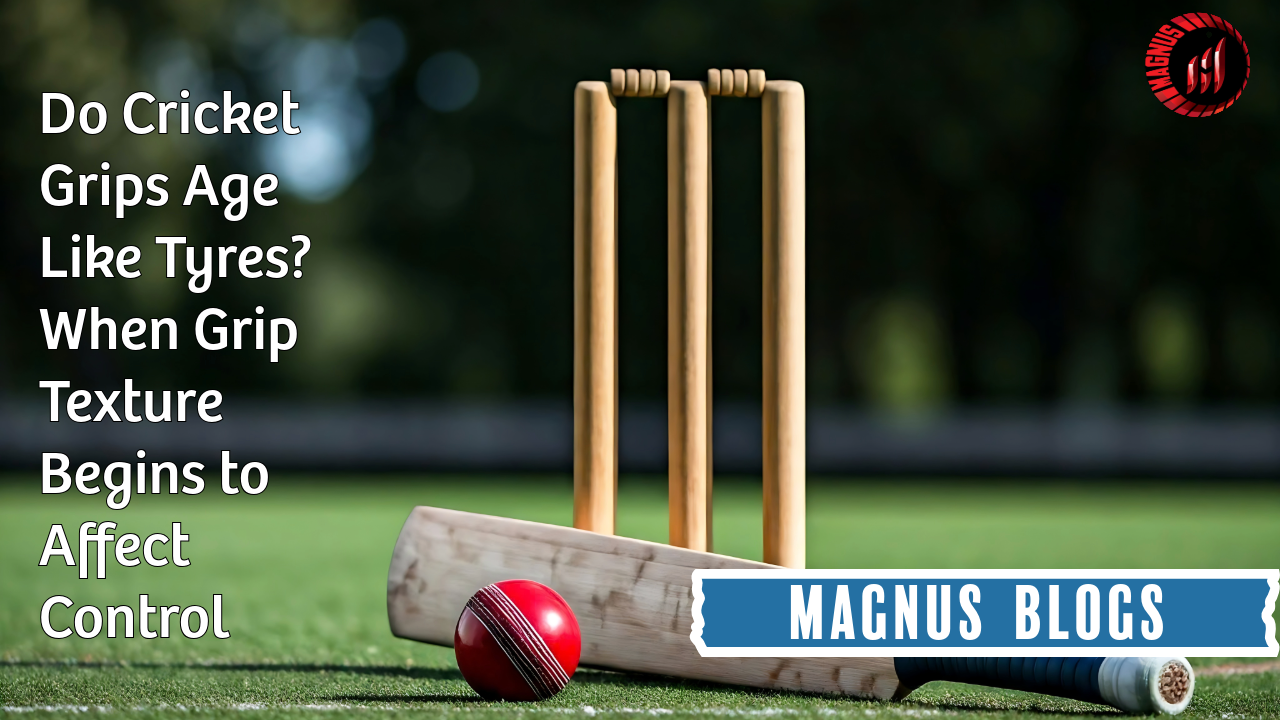A cricket bat is only as responsive as the hand that holds it—and that hand connects to the game through the grip. Often overlooked, the grip plays a major role in how players control the bat, especially during long innings or high-pressure situations. But just like tyres, cricket grips age—and their performance declines long before they visibly fall apart. Let's explore how this subtle aging process can quietly affect your control, timing, and shot-making ability.
The Role of Grip Texture in Bat Control
A new grip feels tacky, responsive, and snug. That texture allows players to generate power while still maintaining fine control. The raised patterns—whether spiral, chevron, or ribbed—enhance friction between glove and bat. This friction isn't just comfort; it's performance.
As the grip begins to wear, these textured patterns begin to flatten. The once-tacky surface becomes slick or overly soft. When that happens, a fraction of your energy is lost on impact. It might feel like your shots are mistimed, but the cause could be something simpler: your grip has aged.
Signs Your Grip Is Past Its Prime
-
Smoothness: If the grip feels like rubbery glass, it's worn down.
-
Excessive softness: A squishy grip lacks rebound and feels unresponsive.
-
Rotation on the handle: If the grip shifts while playing, it's not secure.
-
Sweat absorption: Older grips absorb more sweat, reducing friction and comfort.
-
Color fading: While not always a performance issue, fading often coincides with breakdown of texture.
Environmental Factors That Speed Up Grip Aging
Grips don't age only through use. Storage plays a role too. Sunlight, humidity, and fluctuating temperatures all degrade rubber over time. Just like car tyres, cricket grips can harden or crack even if unused for months.
Performance Impact: Control, Timing & Fatigue
When grip texture fades, players subconsciously adjust their hold—usually tightening it. That extra tension may affect wrist flexibility and lead to timing issues. Over time, this can reduce shot placement accuracy and even cause forearm fatigue during longer innings.
When Should You Replace Your Grip?
-
Club players: Every 3–4 months if playing regularly.
-
Professional use: Every series or 6–8 weeks, depending on conditions.
-
Occasional players: Once a year or when signs of aging appear.
Cricket bat types, Cricket equipment in usa, Cricket equipment store, Cricket gloves, Cricket helmet, Cricket kit bags, Cricket retailers, Durable cricket gloves, English willow bats, Icc approved helmets., Kashmir willow cricket bat, Latest kashmir willow bat
